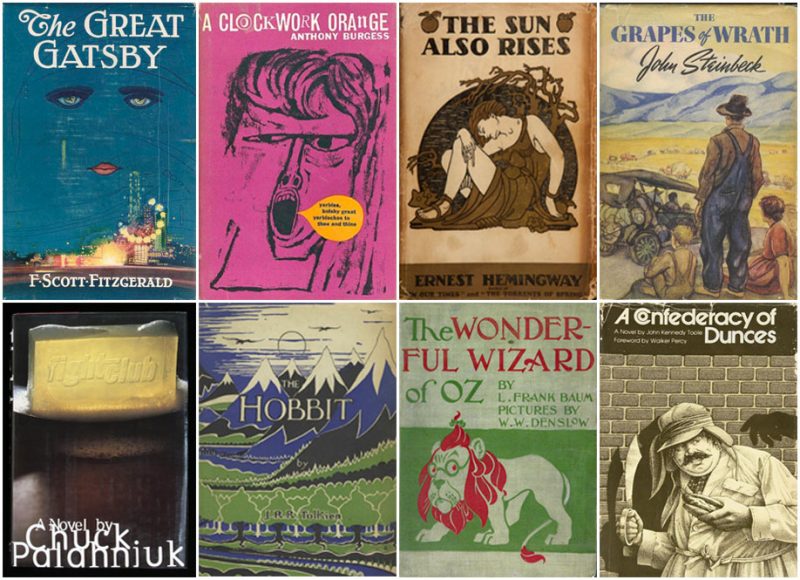A book design is basically the art of incorporating the content, style, format, design, and sequence of the various components of a book into a coherent whole. After the publication of their first edition, most book covers change over the years, whether minimally, correcting for modern fonts and colors, or maximally, going through change after change each generation connecting to a different design. If you’ve ever wondered what your favorite books looked like when they were first published, here is a selection of 16 popular classic book covers.
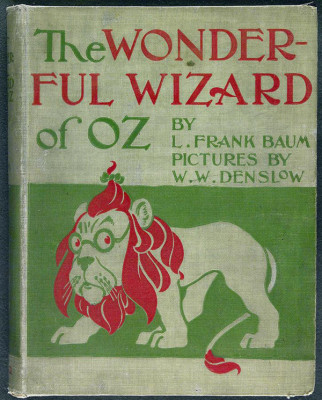
The Wonderful Wizard of Oz is an American children’s novel written by author L. Frank Baum and illustrated by W. W. Denslow, originally published by the George M. Hill Company in Chicago on May 17, 1900. The story chronicles the adventures of a young farm girl named Dorothy in the magical Land of Oz, after she and her pet dog Toto are swept away from their Kansas home by a cyclone. The novel is one of the best-known stories in American literature and has been widely translated.
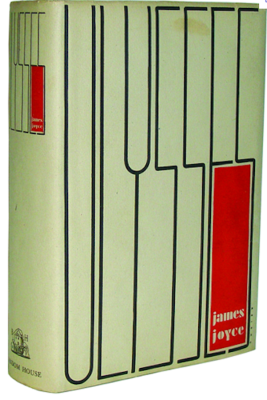
Ulysses is a modernist novel by Irish writer James Joyce. It was first serialised in parts in the American journal The Little Review from March 1918 to December 1920, and then published in its entirety by Sylvia Beach in February 1922, in Paris. It is considered to be one of the most important works of modernist literature, and has been called “a demonstration and summation of the entire movement”.
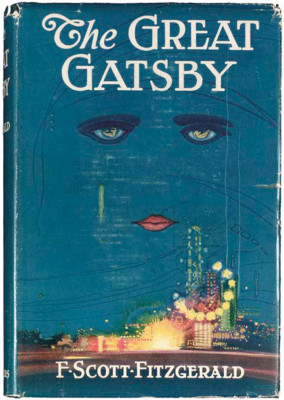
The Great Gatsby is a 1925 novel written by American author F. Scott Fitzgerald that follows a cast of characters living in the fictional town of West Egg on prosperous Long Island in the summer of 1922. The story primarily concerns the young and mysterious millionaire Jay Gatsby and his quixotic passion and obsession for the beautiful former debutante Daisy Buchanan. Considered to be Fitzgerald’s magnum opus, The Great Gatsby explores themes of decadence, idealism, resistance to change, social upheaval, and excess, creating a portrait of the Jazz Age or the Roaring Twenties that has been described as a cautionary tale regarding the American Dream.
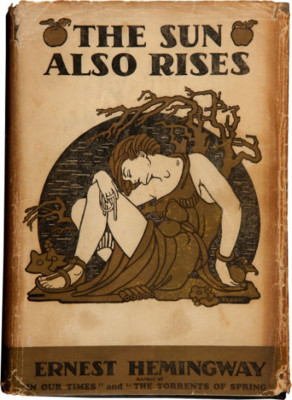
The Sun Also Rises is a 1926 novel written by American author Ernest Hemingway about a group of American and British expatriates who travel from Paris to the Festival of San Fermín in Pamplona to watch the running of the bulls and the bullfights. The novel was published in the United States in October 1926 by the publishing house Scribner’s.
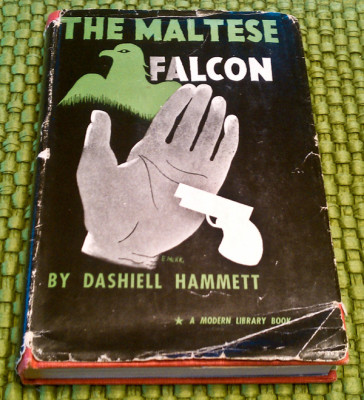
The Maltese Falcon is a 1929 detective novel by Dashiell Hammett, originally serialized in the magazine Black Mask beginning with the September 1929 issue. The main character, Sam Spade, appears in this novel only and in three lesser known short stories, yet is widely cited as the crystallizing figure in the development of the hard-boiled private detective genre.
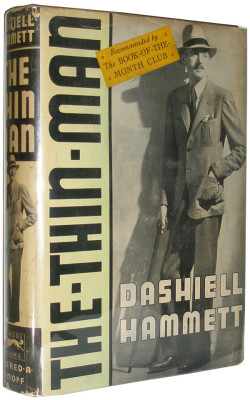
The Thin Man (1934) is a detective novel by Dashiell Hammett. Originally published in the December, 1933 issue of Redbook, it appeared in book form the following month. Although Hammett lived until 1961, The Thin Man was his last published novel.
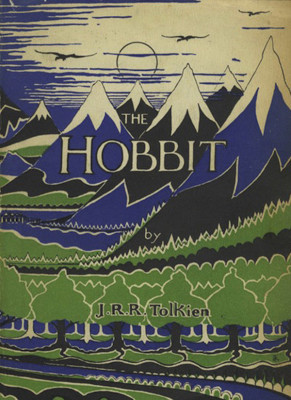
The Hobbit, or There and Back Again is a fantasy novel and children’s book by English author J. R. R. Tolkien. It was published on 21 September 1937 to wide critical acclaim, being nominated for the Carnegie Medal and awarded a prize from the New York Herald Tribune for best juvenile fiction. The book remains popular and is recognized as a classic in children’s literature. Personal growth and forms of heroism are central themes of the story. Along with motifs of warfare, these themes have led critics to view Tolkien’s own experiences during World War I as instrumental in shaping the story. The author’s scholarly knowledge of Germanic philology and interest in fairy tales are often noted as influences.
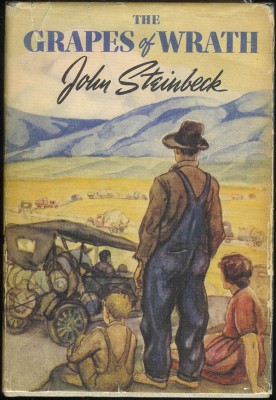
The Grapes of Wrath is an American realist novel written by John Steinbeck and published in 1939. The book won the National Book Award and Pulitzer Prize for fiction, and it was cited prominently when Steinbeck was awarded the Nobel Prize in 1962. Set during the Great Depression, the novel focuses on the Joads, a poor family of tenant farmers driven from their Oklahoma home by drought, economic hardship, agricultural industry changes and bank foreclosures forcing tenant farmers out of work. The Grapes of Wrath is frequently read in American high school and college literature classes due to its historical context and enduring legacy.
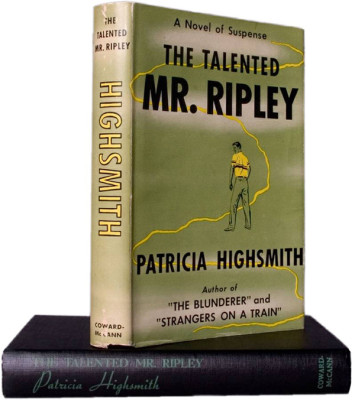
The Talented Mr. Ripley is a 1955 psychological thriller novel by Patricia Highsmith. In 1956, the Mystery Writers of America nominated the novel for the Edgar Allan Poe Award for Best novel. In 1957, the novel won the Grand Prix de Littérature Policière as best international crime novel.
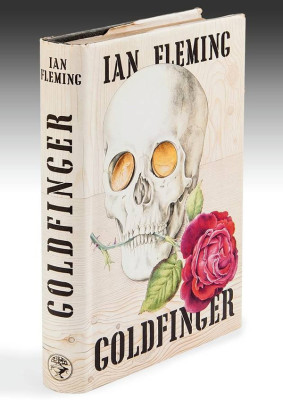
Goldfinger is the seventh novel in Ian Fleming’s James Bond series, first published in the UK by Jonathan Cape on 23 March 1959. Fleming developed the James Bond character more in Goldfinger than in the previous six novels, presenting him as a more complex individual. The novel itself was serialized in five parts in Black Mask in 1929–30 before being published in book form in 1930 by Alfred A. Knopf.
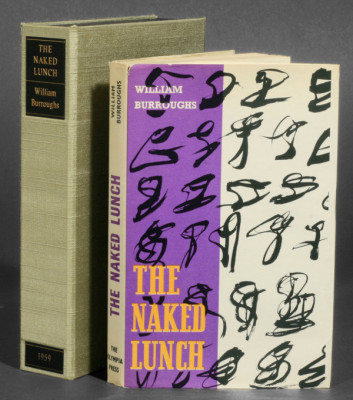
Naked Lunch (sometimes The Naked Lunch) is a novel by American writer William S. Burroughs, originally published in 1959. The book is structured as a series of loosely connected vignettes. Burroughs stated that the chapters are intended to be read in any order. The reader follows the narration of junkie William Lee, who takes on various aliases, from the US to Mexico, eventually to Tangier and the dreamlike Interzone. The vignettes (which Burroughs called “routines”) are drawn from Burroughs’ own experience in these places, and his addiction to drugs (heroin, morphine, and while in Tangier, majoun (a strong marijuana confection) as well as a German opioid, brand name Eukodol, of which he wrote frequently). Upon publication, Grove Press added to the book supplementary material regarding the censorship battle as well as an article written by Burroughs on the topic of drug addiction. In 2002, a “restored text” edition of Naked Lunch was published with some new and previously suppressed material added.
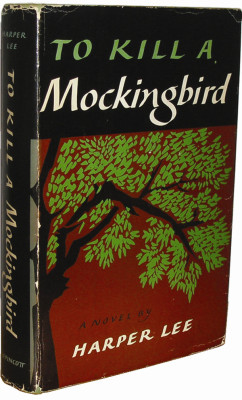
To Kill a Mockingbird is a novel by Harper Lee published in 1960. It was immediately successful, winning the Pulitzer Prize, and has become a classic of modern American literature. The plot and characters are loosely based on the author’s observations of her family and neighbors, as well as on an event that occurred near her hometown in 1936, when she was 10 years old.
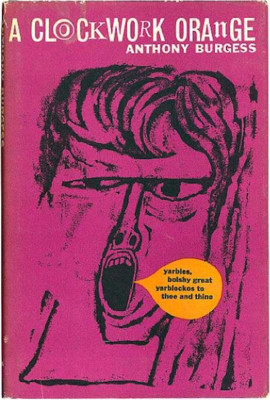
A Clockwork Orange is a dystopian novel by Anthony Burgess published in 1962. Set in a near future English society featuring a subculture of extreme youth violence, the teenage protagonist, Alex, narrates his violent exploits and his experiences with state authorities intent on reforming him. The book is partially written in a Russian-influenced argot called “Nadsat”. According to Burgess it was a jeu d’esprit ( “game of the spirit”) written in just three weeks.
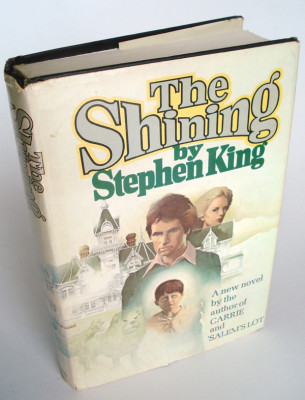
The Shining is a horror novel by American author Stephen King. Published in 1977, it is King’s third published novel and first hardback bestseller, and the success of the book firmly established King as a preeminent author in the horror genre. The setting and characters are influenced by King’s personal experiences, including both his visit to The Stanley Hotel in 1974 and his recovery from alcoholism.
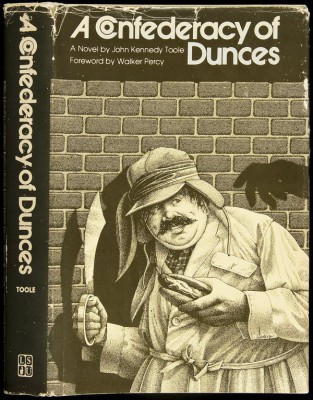
A Confederacy of Dunces is a picaresque novel by American novelist John Kennedy Toole which appeared in 1980, eleven years after Toole’s suicide. Published through the efforts of writer Walker Percy (who also contributed a foreword) and Toole’s mother, the book became first a cult classic, then a mainstream success; it earned Toole a posthumous Pulitzer Prize for Fiction in 1981, and is now considered a canonical work of modern literature of the Southern United States
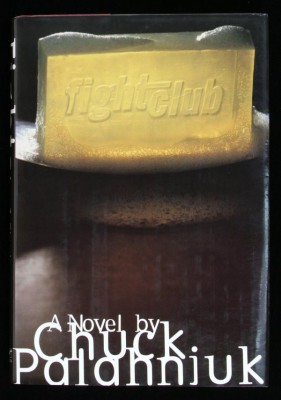
Fight Club is a 1996 novel by Chuck Palahniuk. It follows the experiences of an unnamed protagonist struggling with insomnia. Inspired by his doctor’s exasperated remark that insomnia is not suffering, the protagonist finds relief by impersonating a seriously ill person in several support groups. Then he meets a mysterious man named Tyler Durden and establishes an underground fighting club as radical psychotherapy.
